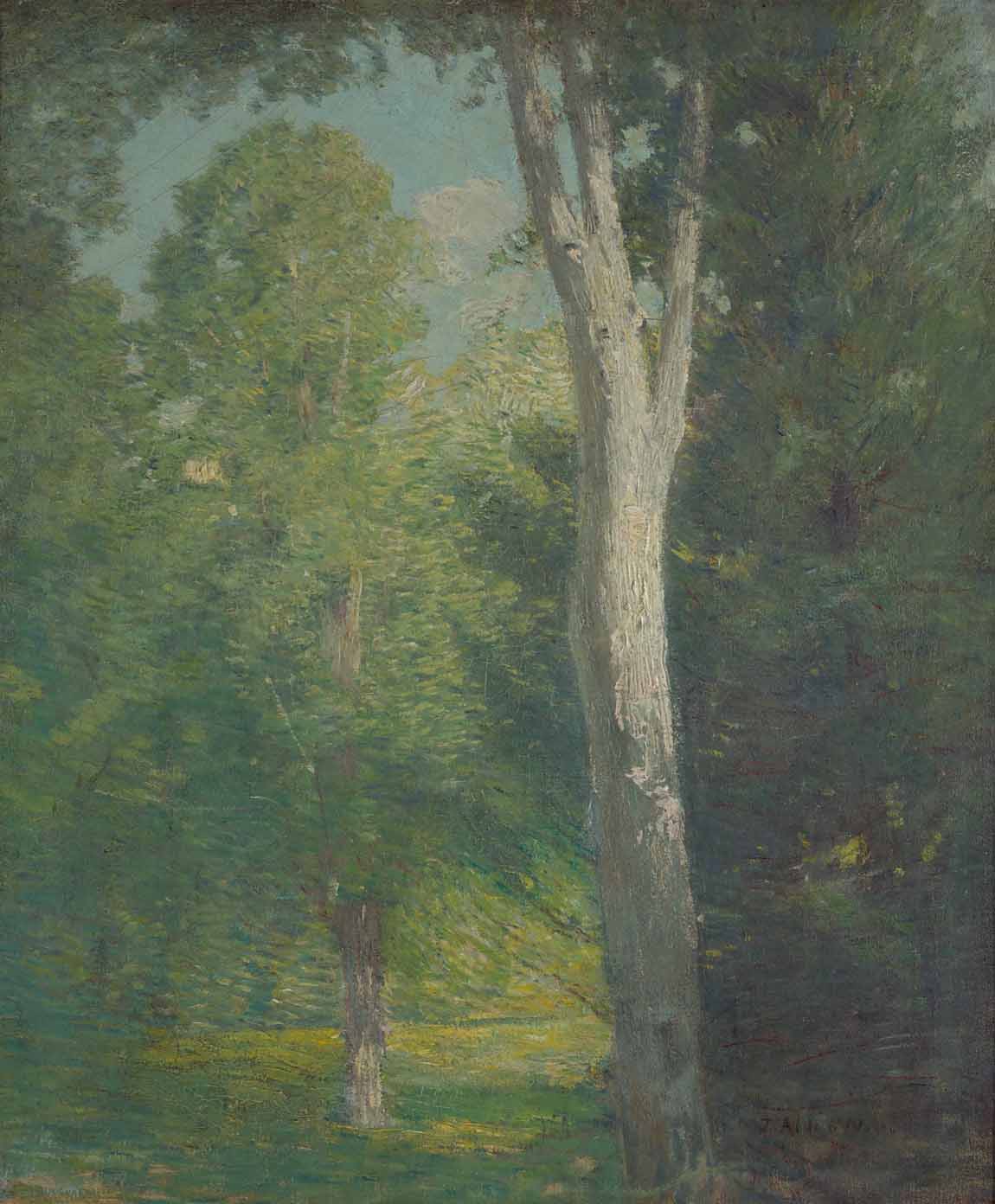
“US Thread Company Mills, Willimantic, Connecticut,” circa 1893–97, oil on canvas, 20 by 24 inches. Gift of Margaret and Raymond Horowitz, in honor of the 50th Anniversary of the National Gallery of Art, 1990.
NEW LONDON, CONN. — The Lyman Allyn Art Museum is presenting a major exhibition of works painted by J. Alden Weir and other American Impressionists in his circle. “A Good Summer’s Work: J. Alden Weir, Connecticut Impressionist,” on view and running through September 11, considers the unique inspiration that American Impressionists drew from the eastern Connecticut landscape.

Photo of J. Alden Weir and Dorothy Weir on the porch at Windham, 1913. National Park Service, Weir Farm National Historic Site, Wilton, Conn.
The exhibition, curated by Dr Anne E. Dawson, Weir scholar and professor of art history at Eastern Connecticut State University, brings together for the first time more than 40 works from museums and private collections across the United States.
American Impressionist J. Alden Weir (1852–1919) is most often associated with his studio at Weir Farm National Historic Site in Branchville, Conn., yet many of the artist’s finest works were created at his little known retreat in Windham, Conn., where he painted each summer for nearly four decades.
Many of these paintings are inspired by the beauty of the rural landscape as well as the interplay of industry and nature in places like nearby Willimantic. Prominent artists in Weir’s circle, including John Singer Sargent, Childe Hassam and Emil Carlsen, whose paintings are also featured in the exhibition, were frequent visitors to the Windham studio; both Hassam and Carlsen also painted there.
Weir painted some of his finest canvases at his home in Windham in eastern Connecticut’s picturesque “Quiet Corner.” Weir’s eastern Connecticut property was one of two working farms he owned in the state. His Branchville farm, in the western part of the state, is now Weir Farm National Historic Site, Connecticut’s only national park and one of only two national parks devoted to an artist. Shedding light on Weir’s life and work in Windham, the Lyman Allyn exhibition aims to correct an imbalance in Weir scholarship and connect new audiences with Connecticut’s artistic heritage and inspiring natural resources.
Drawing on Dawson’s extensive research, the show enriches the visitor’s understanding of the rural retreat movement in Connecticut and introduces new audiences to the ways that artists have found inspiration in its landscape.
The exhibition is accompanied by a companion book, Rare Light: J. Alden Weir in Windham, Connecticut, 1882-1919, edited by Dawson with essays contributed by other art historians. The book includes all major works from the exhibition and others. An educational website, weirinwindham.org, and a documentary, Love at First Sight: J. Alden Weir in Windham, CT, created by Dawson and her students, are now available.
The Lyman Allyn Art Museum is at 625 Williams Street. For additional information, www.lymanallyn.org or 860-443-2545.














